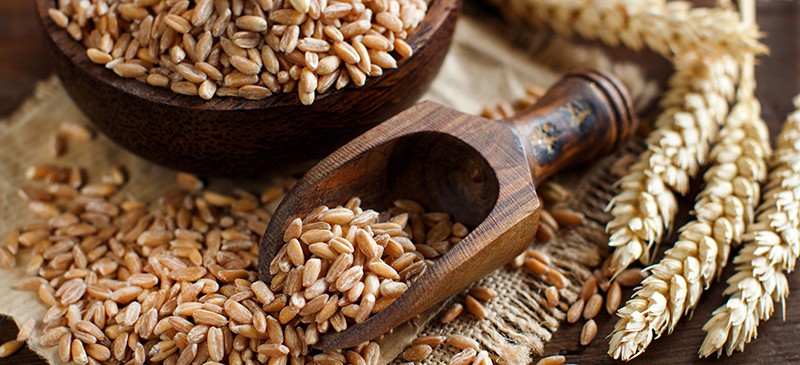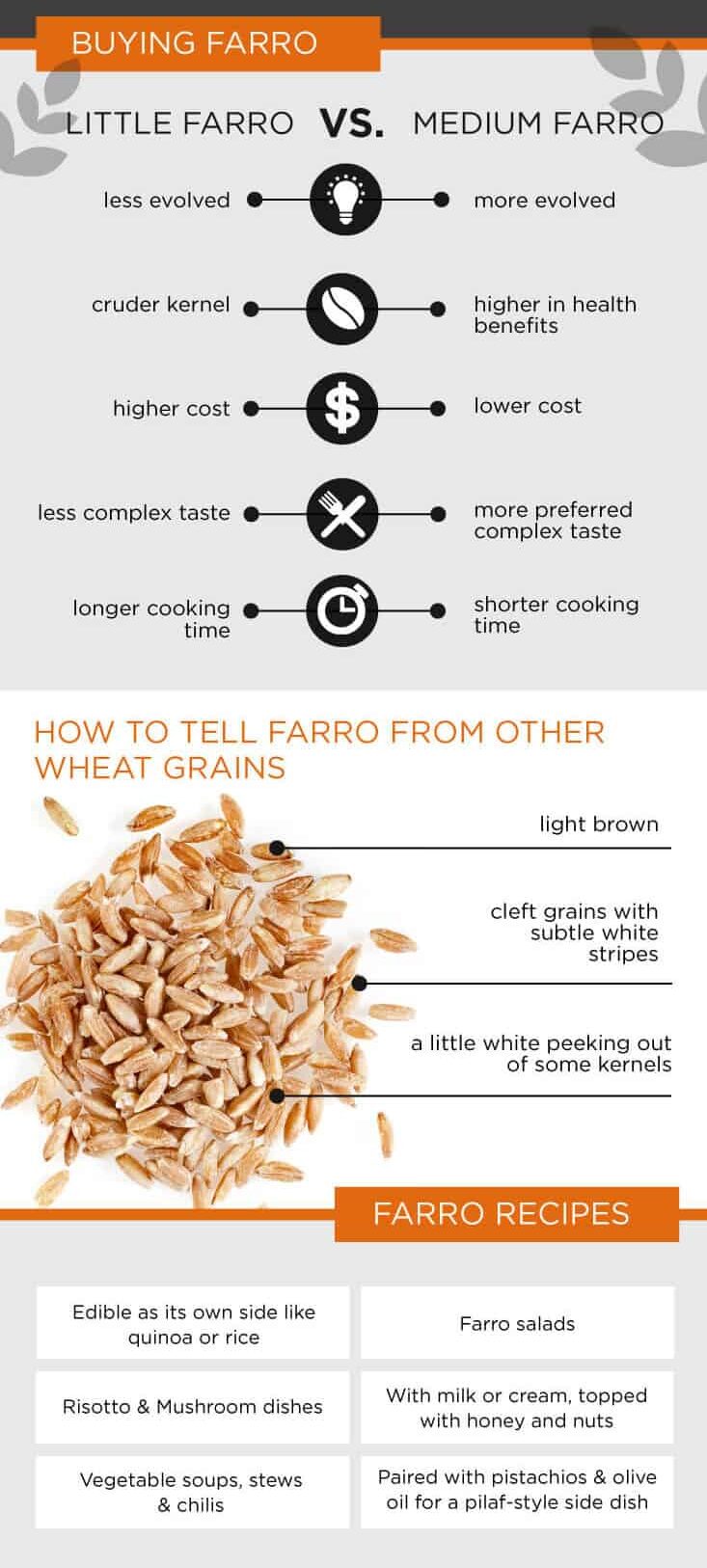This Dr. Axe content is medically reviewed or fact checked to ensure factually accurate information.
With strict editorial sourcing guidelines, we only link to academic research institutions, reputable media sites and, when research is available, medically peer-reviewed studies. Note that the numbers in parentheses (1, 2, etc.) are clickable links to these studies.
The information in our articles is NOT intended to replace a one-on-one relationship with a qualified health care professional and is not intended as medical advice.
This article is based on scientific evidence, written by experts and fact checked by our trained editorial staff. Note that the numbers in parentheses (1, 2, etc.) are clickable links to medically peer-reviewed studies.
Our team includes licensed nutritionists and dietitians, certified health education specialists, as well as certified strength and conditioning specialists, personal trainers and corrective exercise specialists. Our team aims to be not only thorough with its research, but also objective and unbiased.
The information in our articles is NOT intended to replace a one-on-one relationship with a qualified health care professional and is not intended as medical advice.
What Is Farro? Fiber-Rich Ancient Grain with Health Benefits
March 24, 2025

You’ve likely heard of common grains like barley, buckwheat and whole wheat, but have you ever tried farro? Chances are you haven’t even ever heard of it, but you should!
This impressive grain is gaining traction for its health benefits and ability to adapt to different recipes. In a similar vein as kamut or bulgur wheat, farro makes a good alternative grain addition to several dishes.
While it does contain gluten, it has lower levels than today’s wheat, and if prepared properly, the gluten is pre-digested and broken down by sprouting and fermentation, like a sourdough process. This makes it much more tolerable for anyone sensitive to gluten.
So what exactly is farro, what are the biggest farro benefits and how can you use this ancient grain? Let’s take a look.
What is farro?
Farro, also called emmer in some parts of the world, is a type of ancient wheat grain that has been eaten for thousands of years. Today, you’re likely to find farro (Triticum turgidum dicoccum) in many Mediterranean, Ethiopian or Middle Eastern restaurants.
These days, especially in parts of Italy (but also increasingly throughout the world, including in the U.S.), this high-fiber food is staging a comeback as a gourmet specialty. That’s because it’s an excellent source of protein, fiber, and nutrients like magnesium and iron.
Ancient hulled wheat varieties are believed by historians to be among the early cereals that were domesticated in their places of origin in the Fertile Crescent of the Middle East. As “old world grain,” traditionally farro has been used in soups, salads and even some desserts, usually paired with olive oil, fresh herbs, fruit and all types of vegetables.
What is farro similar to? It looks similar to wheat berries (it’s a little light brown grain with a visible bran) and has a chewy texture and mild, nutty flavor, which makes it a good alternative to rice, quinoa, buckwheat, barley, spelt or other ancient grains.
Is farro gluten-free? No, it is not gluten-free.
Because it’s a type of wheat, it contains the protein gluten, which is found in all types of wheat, barley and rye grains. Therefore it isn’t appropriate for those following gluten-free diets.
On the plus side, farro is believed to contain less gluten than many modern strains of wheat. It may also be potentially easier for people with various types of intolerances to digest, according to some research.
Because it’s easily digested and so low in gluten, some claim that certain types of farro can often be eaten by people who normally experience gluten intolerance symptoms,
That being said, for those who can tolerate gluten, there’s an important difference between eating forms of unprocessed wheat grains (like farro, einkorn and barley) compared to popular refined types of wheat. According to groups such as the U.S. Whole Grains Council and many studies conducted over the past several decades, eating 100 percent whole grains (including wheat) provides well-researched benefits, such as:
- reducing the risk of stroke by more than 30 percent
- reducing the risk for type 2 diabetes by 20 percent to 30 percent
- significantly lowering risk for heart disease risk factors, including high cholesterol and high blood pressure
- helping with better weight maintenance
- reducing the risk of asthma
- helping people to consume more dietary fiber, which is important for digestion
- preventing obesity
- reducing the risk for numerous inflammatory diseases
Nutrition facts
Is farro better for you than rice, quinoa, or other whole grains? Like all whole grains, farro provides a concentrated dose of complex carbohydrates, especially dietary fiber.
Because it contains more fiber than other popular grains, like rice or even quinoa, farro might have even more positive benefits when it comes to digestion and cardiovascular health. It’s also exceptionally high in protein for a grain and supplies plenty of vitamins and minerals.
A quarter-cup serving of uncooked farro (about 50 grams) contains approximately:
- Calories: 172
- Total Carbohydrates: 36 g
- Fiber: 3.7 g
- Total Fat: 1.6 g
- Protein: 6.3 g
- Sodium: 0.5 mg (<1% DV*)
- Manganese: 1.3 mg (57% DV)
- Copper: 0.2 mg (22% DV)
- Niacin: 2.9 mg (18% DV)
- Zinc: 2 mg (18% DV)
- Thiamine: 0.2 mg (17% DV)
- Phosphorus: 184 mg (15% DV)
- Magnesium: 59.5 mg (14% DV)
- Iron: 1.6 mg (9% DV)
- Biotin: 2.7 mcg (9% DV)
- Vitamin B6: 0.1 mg (6% DV)
- Potassium: 192.5 mg (4% DV)
*Daily Value: Percentages are based on a diet of 2,000 calories a day.
Health benefits
1. High in fiber
Why is farro a good carb source? Studies have shown that a very high level of fiber, plus other compounds, makes this grain heart-healthy, good for digestion, and beneficial for preventing blood sugar/insulin spikes and dips.
Why is farro such a good high-fiber food? Farro has an intact bran and germ, the parts of the grain that provide nutrients, protein and fiber, which wind up swelling in your digestive tract, keeping you satisfied for longer than refined grains.
A large body of research has shown that whole grain foods are superior to processed grains because they deliver the bran, germ and endosperm of the original grain. They therefore have the outer bran layer (which is composed of non-digestible, mainly insoluble fiber, poorly fermentable carbohydrates) along with the the inner germ and starchy endosperm (which holds all the vitamins, minerals, polyphenols, oils and other phytonutrients).
Research has found that fiber is beneficial for preventing constipation, clearing the arteries of plaque buildup, curbing hunger pangs and supporting a healthy gut environment.
Farro’s complex carbohydrates break down slowly, keeping your energy levels more stable compared to eating refined grains, which makes it a great choice for hard-working athletes.
2. Boosts immunity and heart health
Like other 100 percent whole grains, farro supplies not only fiber, but also resistant starch, oligosaccharides and antioxidants, including phenolic compounds. These have been linked to disease prevention in many studies.
Studies have revealed the more whole grains someone eats, the more protection that person seems to have against chronic diseases like diabetes and cardiovascular disease, in addition to obesity.
Among farro’s different types of carbohydrates is a specific compound called cyanogenic glycosides, which have been shown to positively affect the immune system, lower inflammation, help regulate blood sugar levels and lower cholesterol.
3. Good source of protein
In addition to fiber, it surprises many people to find out that whole grains can be a good way to obtain protein. In fact, farro is considered an excellent source of plant-based protein, providing about the same amount as most legumes or beans.
If you’re cutting down on the amount of animal products or meat you consume, farro can form a complete source of protein when paired with other plant foods like vegetables.
4. High in B vitamins
Farro is a quality niacin food and contains multiple B vitamins that are important for metabolic health and help convert carbohydrates, fats and proteins from the foods we eat into energy.
Research has determined that B vitamins are also important for brain health, maintaining high energy levels, neurotransmitter function and supporting the central nervous system.
B vitamins are critical for development, reproductive capabilities and the conversion of carbohydrates found in whole grains as well.
5. Good source of antioxidants
Most people think of vegetables or fruits as being the only high-antioxidant foods, but research has determined that unprocessed grains with their brans intact also provide antioxidants, especially the type called lignans.
Lignans are bioactive, non-nutrient, non-caloric phenolic plant compounds that have a protective effect when consumed and metabolized by our intestinal bacteria.
Plant lignans are known to reduce inflammation and are highly consumed by populations known for their longevity and heart health, such as those who follow a traditional Mediterranean diet meal plan.
Studies has suggested that increasing your intake of lignans (from foods like whole grains or seeds, for example) is associated with positive reactions of C-reactive protein, a lowering effect on plasma total and low-density lipoprotein cholesterol, lower blood pressure levels, and an overall reduced risk of cardiovascular disease.
6. Provides iron, magnesium and zinc
Farro is a good source of nutrients that some plant-based eaters, or anyone with a mostly processed diet, might be missing out on, including magnesium, zinc and iron.
Iron is important for preventing anemia and helping improve energy, while zinc is crucial for brain function, helping with growth and development, and facilitating DNA and cellular functions.
Magnesium is a crucial electrolyte that has numerous benefits. It’s vital for preventing muscle cramps and PMS symptoms, helping you sleep better, fighting off headaches, and helping with digestion, but many people actually have a magnesium deficiency and don’t even realize it.
7. Can aid weight maintenance
That’s in large part to the farro nutrition profile, this whole grain can be part of a healthy weight loss diet and incorporated into meals regularly to help maintain a healthy weight.
A comprehensive review published in Nutrition Research Reviews highlighted that whole grains are rich in dietary fiber, resistant starch and oligosaccharides. These components contribute to increased satiety and improved digestion, which can aid in weight management.
The review noted that whole-grain consumption has been associated with weight loss and improvements in blood lipid profiles.
Farro, being a whole grain, shares these beneficial properties. Incorporating farro into a balanced diet may support weight management efforts, aligning with the findings related to whole grain consumption and its positive effects on weight control.
Types
Wondering what farro tastes like?
While farro looks like a light brown rice, its flavor is complex and somewhat nutty. Some hint of oats and barley flavor also may be noticed, but it’s not a heavy grain.
Farro comes in several different forms. That’s because there are actually several species of farro grains and more than one way of processing the seeds.
In fact, farro means “ancient wheat grain” in Italian, and there three different grains often called farro:
- Farro piccolo, aka Triticum monococcum or einkorn
- Farro medio, aka Triticum dicoccum or emmer
- Farro grande, aka Triticum spelta or spelt
Farro medio, farro piccolo and farro grande are three separate types with different sizes.
The two most common types are perlato (pearled farro) and semi-perlato (semi-pearled farro) varieties.
- Semi-pearled farro is the better choice among the two, since it has more of the fiber- and nutrient-rich bran. Kinds that are labeled as “pearled” means the farro grain has been partially processed and some of the nutrients and fiber have been removed.
- You might also find farro sold in different “bran grades”: long, medium or cracked grades. Look for “medium farro” if possible, since this is the species that has the preferred complex taste, shorter cooking time and health benefits you’re looking for.
- It’s best to buy long or medium, which means it hasn’t yet been cracked and should be fresher, retaining more nutrients that can be lost when the grain is cracked and bran removed.
- You can crack long grain farro yourself with a coffee grinder or blender if you’d like to speed up cooking time.
- Another type of related wheat plant (Triticum monococcum) called “little farro” is also available, but is “less evolved” than farro and has a cruder kernel, higher cost and different taste.
How can you tell the difference between farro and other wheat grains? Experts recommend looking for light brown, cleft grains with subtle white stripes and a little white peeking out of some of the kernels.
Depending on where you shop, this grain may also be called by other names, such as farro medio.
Farro can be easily confused for spelt (sometimes called farro grande, dinkel wheat or hulled wheat), but luckily spelt has similar benefits and a comparable taste.
Where to buy farro
By the beginning of the 20th century, farro was mostly replaced by processed flour products made from higher-yielding wheat strains, which meant it could barely be found anywhere besides online or some ethnic grocery stores for many decades.
However, you can find farro in most large supermarkets these days, health food stores and usually Italian/Middle Eastern grocers.
It’s typically sold dried and prepared by cooking the grains in water until they’re softened up and chewy but still somewhat crunchy, too.

How to cook
Since whole grains take a longer time to cook than processed grains, it’s a good idea to first soak far grains overnight if you’re using semi-pearled farro grains.
Not familiar with the benefits of sprouted grains? Compared to sprouted seeds (in this case sprouted grains), unsprouted grain seeds have a lower protein content, deficiency of certain essential amino acids, lower protein and starch availability, and the presence of certain antinutrients that block the absorption of vitamins and minerals.
Here’s how to cook farro on the stovetop (or it can be cooked in a slow cooker or pressure cooker):

